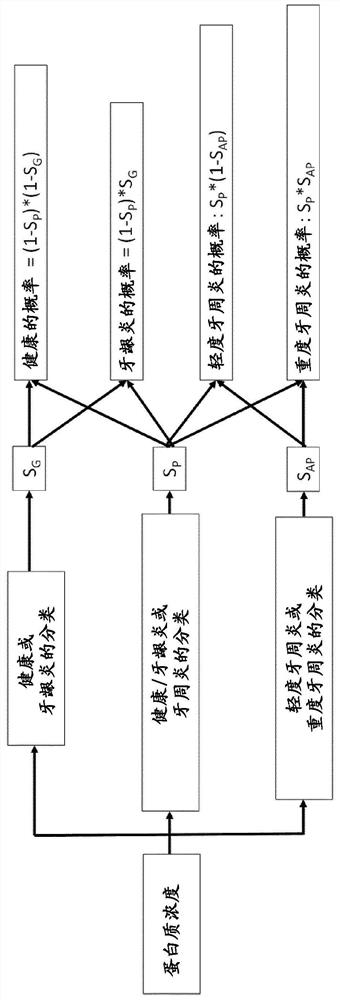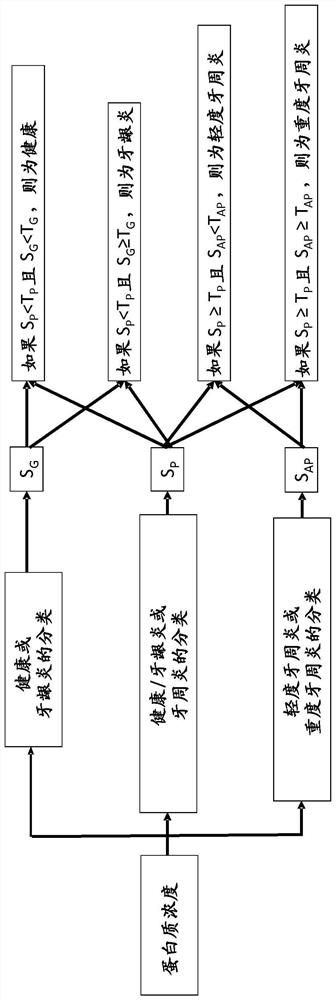Periodontal disease diagnostic methods, uses and kits
A periodontal disease, periodontitis technology, applied in the field of saliva-based diagnosis, can solve the problems that consumers cannot perform
- Summary
- Abstract
- Description
- Claims
- Application Information
AI Technical Summary
Problems solved by technology
Method used
Image
Examples
Embodiment Construction
[0027]In a general sense, the present invention is based on the sensible insight that, in saliva samples of human patients, three rare proteins can be used as biomarkers for classifying a patient's periodontal disease state into one of the following four categories One: The first category is no periodontal disease; the second category is gingivitis; the third category is mild periodontitis or moderate periodontitis (unless otherwise specified, the term "mild periodontitis" is used here Moderate periodontitis should be included before and after, but severe periodontitis should not be included); and the fourth category is severe periodontitis.
[0028] Hereinafter, the third category is collectively referred to as mild periodontitis.
[0029] Thus, the invention can distinguish between: a healthy mouth, which does not require treatment for periodontal disease; gingivitis, which allows timely intervention to reverse the effects of periodontitis before it develops; mild periodonti...
PUM
 Login to View More
Login to View More Abstract
Description
Claims
Application Information
 Login to View More
Login to View More - Generate Ideas
- Intellectual Property
- Life Sciences
- Materials
- Tech Scout
- Unparalleled Data Quality
- Higher Quality Content
- 60% Fewer Hallucinations
Browse by: Latest US Patents, China's latest patents, Technical Efficacy Thesaurus, Application Domain, Technology Topic, Popular Technical Reports.
© 2025 PatSnap. All rights reserved.Legal|Privacy policy|Modern Slavery Act Transparency Statement|Sitemap|About US| Contact US: help@patsnap.com



